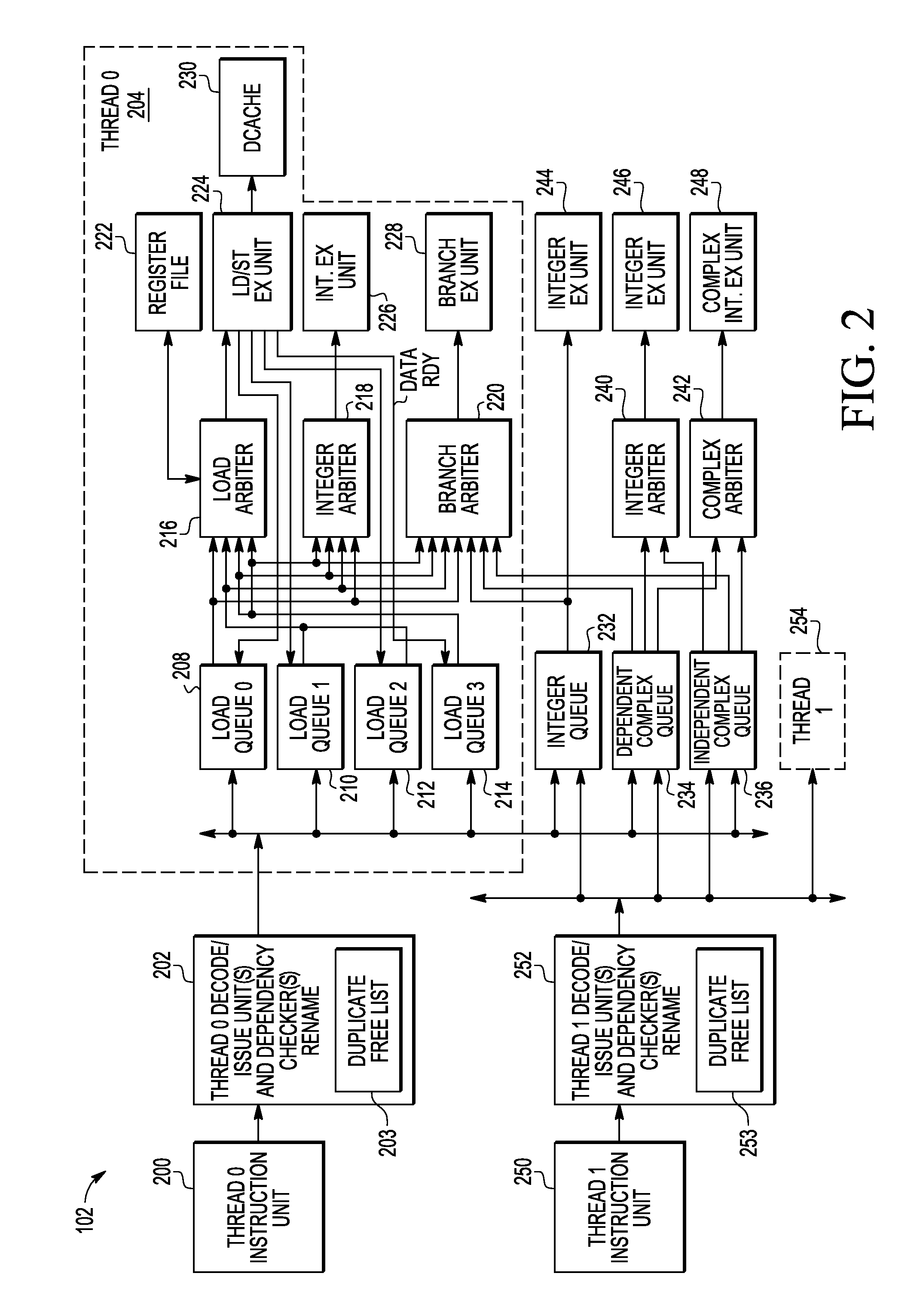Data processing system with latency tolerance execution
- Summary
- Abstract
- Description
- Claims
- Application Information
AI Technical Summary
Problems solved by technology
Method used
Image
Examples
Embodiment Construction
[0017]In one embodiment, a data processing system uses a number of execution queues in which decoded instructions are issued to the queues and the instructions in each execution queue are executed in order but the instructions from different execution queues can execute out-of-order. If an instruction has a dependency on another instruction already present in a queue, the instruction is placed in the same queue. Furthermore, since the instruction may have 2 source operands, the instruction can be sent to multiple queues. In this case, a set of 1-hot duplicate bits may be used to keep track of duplicate instructions which reside in the queues. This methodology is further described in U.S. patent application Ser. No. 13 / 116,325. Also, for dependent instructions of different types, a sync instruction can be sent to the queue holding the instruction on which it depends, while the actual instruction is sent to the queue of the same type. In this case, in accordance with an embodiment of ...
PUM
 Login to View More
Login to View More Abstract
Description
Claims
Application Information
 Login to View More
Login to View More - R&D
- Intellectual Property
- Life Sciences
- Materials
- Tech Scout
- Unparalleled Data Quality
- Higher Quality Content
- 60% Fewer Hallucinations
Browse by: Latest US Patents, China's latest patents, Technical Efficacy Thesaurus, Application Domain, Technology Topic, Popular Technical Reports.
© 2025 PatSnap. All rights reserved.Legal|Privacy policy|Modern Slavery Act Transparency Statement|Sitemap|About US| Contact US: help@patsnap.com



